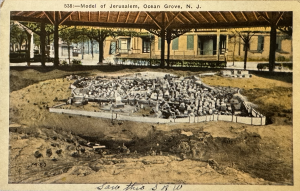 TORONTO — A dark part of Toronto’s history was commemorated Aug.
TORONTO — A dark part of Toronto’s history was commemorated Aug.
17, when Heritage Toronto unveiled a plaque recalling the riot at
Christie Pits park 75 years ago.
From left, city councillor Joe Mihevc; Fredelle Brief, chair of the community relations committee of Canadian Jewish Congress; sociology professor Cyril Levitt; Peter Ortved, chair of Heritage Toronto Board; and Judy Stoffman, chair of the Christie Pits plaque committee, unveil a plaque commemorating the Christie Pits riot of August 1933.
At the park, on Aug. 16, 1933, members of the Anglo-Canadian Pit Gang, also known as the Swastika Club, unfurled a large black swastika at the end of a softball game between the St. Peter’s team and the Jewish Harbord Playground team.
Outraged, Jewish fans began to attack the gang members, and both sides ran for reinforcements and homemade weapons – baseball bats, broken bottles, bricks, broom handles and boots.
For six hours, the park was filled with hate and blood. Surprisingly, no one was killed.
“The riot that occurred here should be remembered for precisely what it was – one of the worst ethnic riots in this city’s history, in which warring youths from two camps… beat each other violently and horribly with whatever weapons they had on hand,” Peter Ortved, the chair of the Heritage Toronto Board, said at the ceremony, which took place in Christie Pits park.
While most of Heritage Toronto’s plaques celebrate bright moments in the city’s history, Ortved said that it is important to remember darker times as well.
“Cities and communities that understand themselves don’t just remember the praiseworthy bits in their history. To do so leaves a dangerously lopsided perspective on the past. We are being painfully honest today. We are recognizing that Toronto was once a city which made an anti-Semitic race riot possible,” he said.
At the time, Bloor Street was a kind of dividing line for the Jewish community. Jewish and Italian immigrants lived primarily south of Bloor, and British Protestants lived to the north. Both groups used Christie Pits park, located at Christie and Bloor streets.
Cyril Levitt, a sociology professor at McMaster and co-author of The Riot at Christie Pits, said Toronto in the 1930s was a British, Protestant city. About 81 per cent of the population was of British decent.
The riot symbolized the blatant anti-Semitism that was not uncommon in Toronto during the depression.
Signs like “No Jews or dogs allowed” were seen in the city. Jews were barred from certain social clubs, had limitations on admission to educational institutions and couldn’t get certain jobs because of their religion.
As the Nazi party came to power in Germany, Toronto locals in the Beaches area formed “swastika clubs” in an effort to ban Jews from some Toronto beaches.
“The Toronto press had carried stories on a daily basis about Hitler’s regime. The significance [of the swastika] was not lost on the Jewish youth of the city,” Levitt said.
Lionel Mernick, 88, said the plaque was long overdue. He was there the night of the riot, but was too young to participate.
“I wasn’t quite 14. I was just watching and making sure the telephone booth was clear. Guys in the Jewish community were waiting for the call. They went down the hill in one line,” Mernick said.
While recounting his experience as a Jew in the 1930s, Mernick began to cry.
“It’s hard for me to listen,” he said of the presentation of the plaque. “For me to see a plaque finally put up, I never thought I’d see the day. As young as I was, I couldn’t go into some of the parks. [People] would chase me out. It was a bad time. The riot helped a bit. We were a little stronger.”
For many Jews, the story of the Christie Pits riot was passed from generation to generation. Judy Stoffman, the chair of the Christie Pits plaque committee, began noticing references to the riot in literature and decided that it was time for a plaque.
“The event rose from the mud. People were ready – not the initial generation, but their grandchildren,” she said. “I just thought that the time was right. It was the last moment people who had been there would be available. It serves as a reminder that there are a few dark passages on the road to multiculturalism.”
The plaque will be put up permanently by mid-September.






